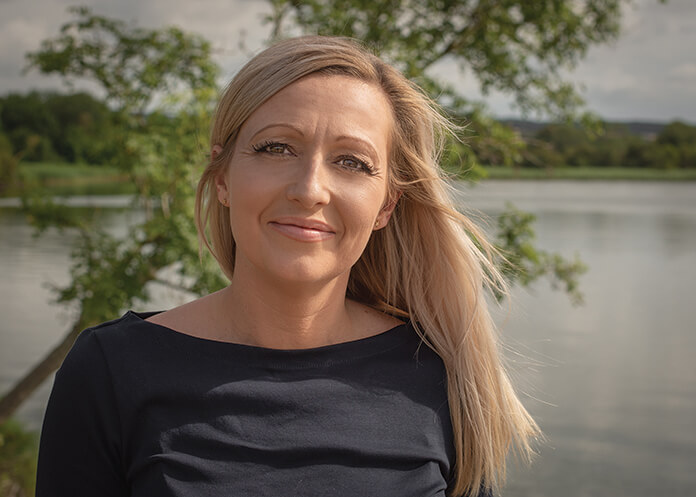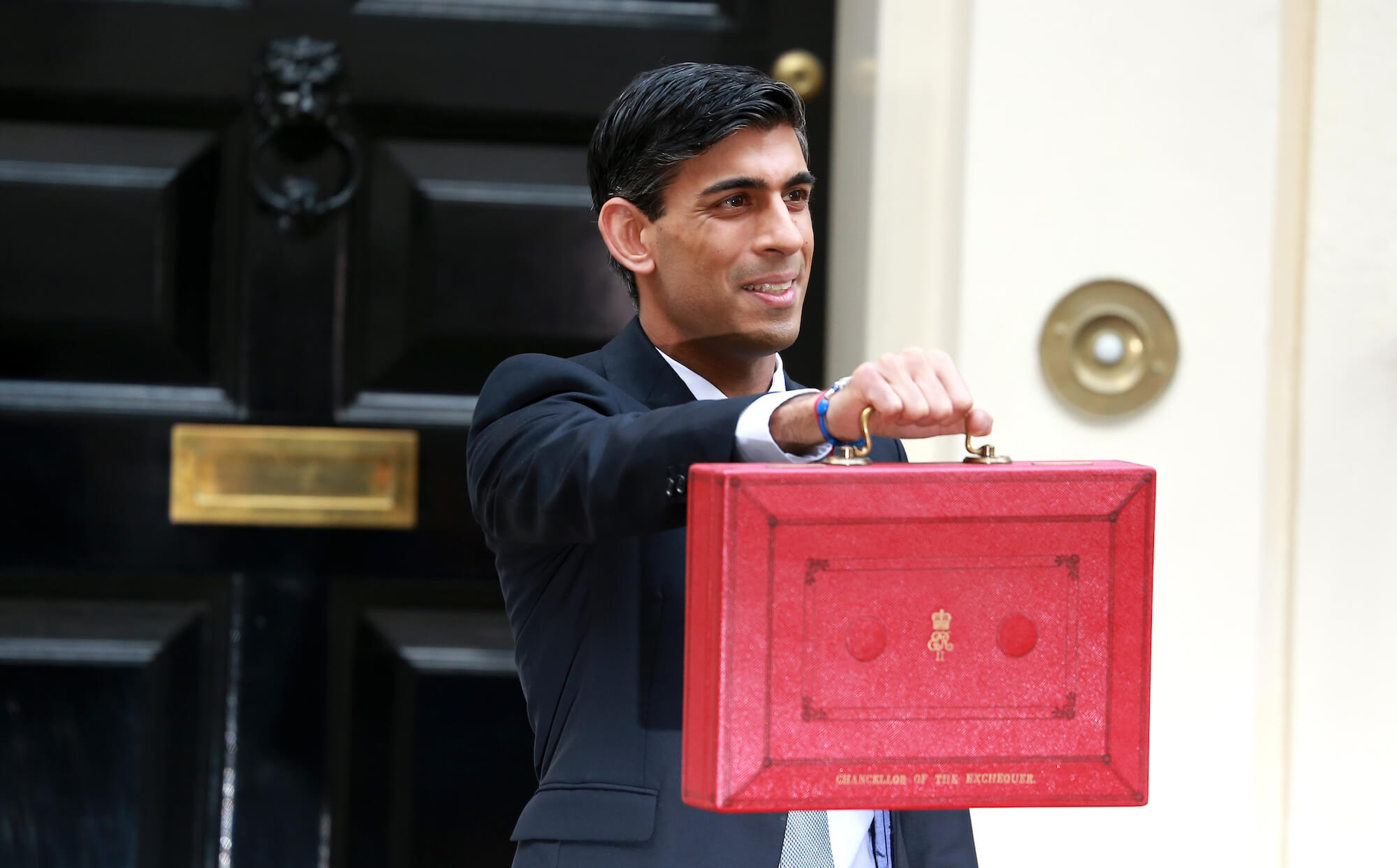Turbo-charge your property business with a SSAS
Goal setting for 2021
Health-and-safety basics for your business
Should I move full time into property?
Bounce Back Loans & Property
Can you use Bounce Back Loans for property investment? And will it affect my attractiveness to lenders in the future?
What is a Bounce Back Loan?
Bounce Back Loans are one of the available options of state-backed financial aid available to businesses during the coronavirus pandemic to help keep them afloat through these challenging times.
The loans are available at between £2,000 and £50,000, capped at 25% of the business’ total turnover for the previous financial year, or – if the company is less than 12 months old – at the predicted turnover for the following financial year, with rates rising to 2.5% per year when the repayments begin.
In addition, businesses will be offered the chance to take payment holidays or switch to interest-only payments for a period of time during the loan term, if needed. There is no interest charged to the borrower for the first 12 months and no repayments needed either for the same period. The loans are issued for up to ten years, and there is no penalty to repay the facility early.
Between May and July alone, more than 860,000 Bounce Back Loans were issued, with figures now reaching well over one million to date.
Bounce Back Loan Purpose
The purpose of the loans is to help pay the salaries and running costs of a business during periods of closure, or to help the business create value to achieve the same objective. They’re not intended for the purchase of hard assets such as property.
There have been reports of some lenders accepting Bounce Back Loans as a form of deposit if moved between two companies as an inter-company loan (a loan from one of your companies to another one of your companies) – which to me is madness. On the other hand, it would be delusional to think that some property investors aren’t using the state-backed aid for just that purpose. Purchasing property.
Conversely, while these loans were extended and backed by the government for the purpose of helping people continue as normal, not all lenders see it like that. Many property investors have reported difficulty in securing mortgages as a result of taking out the finance. It may seem against the spirit of the government assistance for lenders to choose not to lend to investors for taking out these loans but – in their minds – it’s still credit that could demonstrate a lack of strength to “ride out the storms,” therefore making the investor insufficiently credit-worthy.
Lenders really want to ensure that companies are not facing on-going challenges which could put the mortgage at risk. I know, ludicrous. So make a note: some lenders won’t take kindly to firms having sought this kind of assistance, even during the extenuating circumstances of an economy-crushing, global pandemic. These lenders won’t take into account the fact that some businesses may use the finance as a “just-in-case” measure, even if they don’t need it at all.
As a business owner, I find it repulsive that some property investors are knowingly using this finance to purchase properties (yes, properties for £50,000 do exist, people). This finance is for growing employers.
On the other hand, these loans are intended to help carry out normal business activities, which I appreciate for some might be property development. So I guess, in some circumstances, refurbishment and construction work would constitute normal business activities. So, in my opinion and in these circumstances, this would be a permitted use of the funds. But read through any Bounce Back Loan terms and conditions and, more often than not, you’ll see that there’s a specific mention that you cannot purchase property with the loan proceeds.
Like anything new and uncharted, there’s always a huge grey area. And it doesn’t help that some well-known property speakers and “trainers” are openly telling people that the finance is “free money” that you “don’t need to pay back.” It just goes completely against not only the spirit of the help, but also normal, logical rules of how a loan works!
According to some sources, this has had the effect of pushing up house prices in the north, where investors are marching to hunt for properties with £50,000 burning a hole in their pockets. Some estate agents are reporting that there are properties worth £40,000 selling for £50,000 just because these novice investors have the money.
The British Business Bank, which is overseeing the Bounce Back Loan scheme, has a team that monitors potential fraud. So I guess it will be a matter of time before these people are found out, or by that time will the damage be done?
My advice – use these loans for their intended purpose, ie: keeping your business afloat, not to add to your property portfolio.
Disclaimer
The author is not an accountant or finance professional. You should always discuss your personal circumstances with an accredited broker or finance professional before making any decisions.
Vendor Finance
The magic bullet to substantially increase your deal leverage
I often find that vendor finance is at once under-utilised and the Holy Grail. It’s crazy how many times complicated or protracted financial tools are used where a simple vendor finance mechanism would be the obvious choice. I guess people avoid it because they think it’s a tough negotiation or that the vendor will flat out reject it.
I use vendor finance – or at least an element of it – all the time when buying properties, businesses… anything really! It’s almost like your way of enforcing warranties should something go wrong or just differently to how you anticipated it. The trouble is, in the property world it’s pretty much “what you see is what you get” – but this isn’t always the case.
Purchase lease options
Anyone who’s familiar with me in the property arena will know me for my work using property options and purchase lease options. This is where you agree an option (not a deferred completion) to purchase a property at any time within a specified timeframe. Then, with a lease option, you agree to lease the property during this time, so that you can make use of it whilst you wait to purchase it. If carried out correctly – and legally – this can give you all the benefits of ownership without strictly owning the property. For example, you can benefit from rental profits as well as any appreciation of the value of the property because you will buy it for the pre-agreed amount, even if the property is worth more when you come to exercise your right to purchase.
I’ve made a lot of money using these methods, but you must be careful. Whilst this is a financial tool touted as a way to get into property with little money and experience by many of the gurus out there, it’s actually an advanced purchase mechanism that requires some degree of property knowledge, skill and business acumen to get right; yes, you’re benefiting from the perks of ownership, but you need to bear in mind that you’ll also have all the responsibilities of ownership…
Private mortgages
This is another method that I’ve had success with in the past. Whilst similar in nature to purchase lease options, private finance – or more commonly referred to as private mortgages (one form of vendor finance) – is where the seller becomes your ‘mortgage company’, allowing you to pay off the purchase price over time. This works particularly well when buying from corporate entities, even better when the transaction is for a commercial property.
It can also be a great way to push struggling deals over the line if the finance you’ve arranged falls short, or if there are legal or planning issues you need resolved that can’t be sorted pre-completion. Saying, “let’s put this last £150,000 of the purchase price into a vendor finance arrangement where I pay you X amount per month over three years, that way we can complete…” can be a very powerful thing. Maybe even say to the seller: “imagine the monthly payments as a kind of deferred income – take a break from work and go on holiday for six months…”
Another great way to use this method is to get better rates on finance, as refinance tends to be easier and somewhat cheaper than arranging purchase finance. So, for example, why not put the property in the buyer’s name with zero payment, but agree to a vendor finance arrangement with the seller and make interest-only payments to them, with them having a charge over the property, until you can refinance. This then pays the seller off in full. Of course, in this situation it would require the property to be unencumbered (have no mortgage), but your creativity here is the only limitation.
How to find these deals
Direct-to-vendor is usually the key. When I was more active in property before becoming a lender, I would spend anywhere between £1,000 and £2,000 per month on advertising directly to individuals who were looking to sell their property, but hadn’t yet approached estate agents. You can do this in a variety of ways, Facebook, Google, industry media, even bandit boards… again – how far does your creativity stretch?
Vendor finance is such a handy thing to have in your toolbox. I wouldn’t rely on it solely to execute deals, but it can certainly hammer out troublesome properties or give you the leverage you never thought you could have.
Disclaimer
The author is not an accountant or finance professional. You should always discuss your personal circumstances with an accredited finance professional
The holding company structure
Why entrepreneurs should have a property investment business, and why they should structure it in this way.
Nathan is an entrepreneur and private equity investor of over 12 years. He’s started, grown and sold companies in the medical sector. With a passion for property, he owns a portfolio across the UK, but is now an FCA registered private lender and investor, with investments in over 14 businesses.
In this article, I thought it would be good to go over some of the actions that I think entrepreneurs and business owners should be undertaking in order to safeguard their future as well as how to grow and stabilise their income, especially for those businesses that are subject to seasonality.
We all know that property is a good place to store capital, and many business owners are already aware of this. But it’s also a great way to build up a secondary income stream that complements the income received from your primary business. It also helps to “flatten” out seasonal or volatile demand. In addition, whilst your business will help build your investment portfolio, as time goes by, the portfolio will then help grow your business, and so on. Having property and investment equity to leverage against can help give your business access to a greater scope of capital for re-investment and, subsequently, greater profits.
When I mention this, many entrepreneurs’ eyes glaze over – property can seem a boring and slow concept to a fast-moving business owner. But it needn’t be. Since building my own portfolio, the correlation between the success of my property and business is very much apparent – they feed off one another. And property can be fun!
One way to achieve this is to move profits from your trading business to your property investment business. This needn’t trigger taxable events either; you can use mechanisms like inter-company loans, or dividends if your investment business owns your trading business. Corporate dividends – ie: one company paying another company a dividend – are tax free almost all of the time (always check this with your chartered accountant or tax adviser, though).
Once this money is available to your property business, you can start having fun. One important point to stress is that this activity should be kept separate from your trading business so that you don’t mix liabilities and associated risks. To do this, many of us use the following structure:
In a simple company group structure like this, a business owner is able to move money around efficiently, while at the same time protecting assets from the risks of day-to-day operations and trade creditors. For example, you don’t want a rowdy cardboard supplier chasing payments from a business that owns all of your property…
As your trading business feeds capital into your property business, which in turn invests this money and grows, your equity in those investments will also grow. This means that in future you can leverage commercial loans against that equity which can then go back into your business to help it expand, and vice versa, supercharging your growth.
The holding company
So what is a holding company? Simple, a holding company is a company set up to own the shares in another company. It doesn’t usually produce any products or services itself, and does not trade. However, what it does do is allow you to do a variety of beneficial things to help you be as tax efficient as possible, especially if your plan is to invest the majority of the earnings from your businesses. Some of these benefits can include:
- Protecting assets from creditors
- Reducing operational risk
- Minimising tax/deferring earnings
- Flexibility for investing and growth/expansion
- Succession planning
For a holdings company that provides no products or services, tax at this level can be as low as zero. Dividends paid to your holding company from your other companies aren’t taxed and there is no capital gains tax on the disposal of company shares (where the holding company owns more than 30% of the share capital of the business and the whole shareholding is disposed – see ‘Significant Shareholder Exemption’). This could be a good way to sell your business, or your property portfolio as a whole – especially as Stamp Duty on company shares is much lower than it would normally be on property transactions. This gives you much greater flexibility.
It’s worth noting that many property lenders don’t like holding company structures. Owing to the ease at which you can move money around, lenders could see this as a way to ‘drain’ capital from your property company meaning that ostensibly the property company couldn’t meet its mortgage obligations. Now, obviously you wouldn’t do this, but it’s a risk to the lender. However, in many situations, you’ll be looking to filter profits from your business, so assuming purchases are in cash (which is how we do it in our business) then this won’t be an issue. And, having said this, it isn’t a problem for all lenders. Another alternative is to become a lender, which is what we did – thus earning a commercial rate on the money you filter into your investment company.
Hopefully this has given you an introduction to having a property investment business and a holding company structure. Next time we will look at special-purpose vehicles to make short-term property investments such as flips.
Disclaimer
This article was written in August 2020. I am not an accountant or tax professional. You should always discuss your personal circumstances with an accredited tax professional as tax legislation is subject to change.

Systemise your business to scale up
Rishi Sunak set to overturn Capital Gains Tax system
Capital Gains Tax (CGT) is the latest budgetary issue to come under the radar of Rishi Sunak. And not in a good way for thousands of property investors and home owners, it appears.
In commissioning a review by the Office of Tax Simplification (OTS) yesterday, the Chancellor is believed to be considering altering the current system. This is directly in relation to exemptions, relief and allowances. In March he slashed the Entrepreneur Lifetime Relief from £10m to £1m.
In explaining the move, Mr Sunak said he wanted to “simplify” CGT.
He added: “In particular, I would be interested in any proposals from the OTS on the regime of allowances, exemptions, reliefs and the treatment of losses within CGT, and the interactions of how gains are taxed compared to other types of income.”
Move to make up for stamp duty cuts
Many analysts say the move is in an effort to make up for the money the government is expected to lose by extending the Stamp Duty threshold to £500,000 before tax is paid.
That came into force on Monday and means property investors and those with second homes are due only the three per cent surcharge. It looks set to lose the government £3bn a year. A reduction in VAT for the hospitality sector will have a similar effect in cutting income the government receives from the tax payer.
Meanwhile, CGT brought in the government £8.8bn for the year 2017-18. That’s equivalent to paying a tax of 15 per cent, according to the OTS.
Corporates not subject to change
Any CGT changes will affect individuals and small to medium-sized businesses – rather than large corporate groups.
Current CGT tax rates on property are 28 per cent for those in the higher and additional rate categories, and 18 per cent for basic rate taxpayers.











